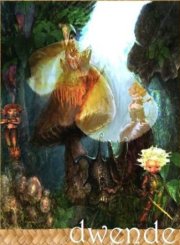Interesting Philippine Folktales and Philippine Folklore
When there is talk of Philippine folktales and Philippine folklore, reference to the pre-colonial Philippine society immediately comes to mind.
Early Filipinos had their own set of written characters and alphabet and rich oral and written traditions of folktales and folklore which gives a glimpse into the talent of our ancestors in storytelling.
Among the most favorite pre-colonial literature are folktales and folklores. Philippine folktales are locally known as alamat. It can be further classified into: myths which talk about the creation of man and the world, as well as super natural beings; legends which talk about an origin of a place or a thing; fables which use animals and things to convey the moral lesson of the story and fantastic stories which talk about odd and unusual characters.

Duwende; Dwarfs
On the other hand, Philippine folklore usually talks about the life and the beliefs of the ancestors of a particular ethnic group.
It is an oral tradition which is transmitted through word of mouth from generation to generation.
Thanks to the effort of folk literature students and enthusiasts, many of these Philippine folklore have been transcribed and can be accessed through various media like books, audio tapes and the internet.
Like the folktales, they are also classified to groups namely: myths and legends, fables, tales of the supernatural, heroic tales and tales of laughter.
Examples of Philippine Folk Literature
Fanciful stories of Philippine folktales include deities, mythical creatures and creation stories. The folktales vary from one ethnic group to the other. Popular Tagalog folktales include: The Creation Story, The Story of Benito, The Adventures of Juan, The Origin of Rice, The Legend of Princess Macapuno, Why the Sky is High, and more.
On the other hand, the Ilocanos have The Monkey and the Turtle, The Poor Fisherman and His Wife, and The White Squash. Visayan folktales have The Battle of the Crabs, The Spider and the Fly, The Virtue of the Coconut, and The Hawk and the Hen among many others. Famous Mindanao folktales include: How the Angels Built Lake Lanao and Eclipses.
Filipinos also enjoy reading about mythical beings and animals and some even believe in their existence like that of an Aswang or monster, Manananggal or a self segmenter, Witches, Nuno sa Punso or goblins, Multo or ghosts, Sirena or mermaids, Duwende or dwarfs, Tikbalang or demon horses and Tiyanaks or demon infants.
Philippine folklore provides a good source for these stories. Among the most famous are: The Mariners and the Four Aswangs of Capiz and The Two Old Women and the Crocodile. The stories of Maria Makiling, Juan Tamad, Si Malakas at si Maganda, Sarimanok, Bernardo Carpio, Lam-Ang and Ama-ron are among the most loved folklore in the country.
Most of these Philippine folktales and Philippine folklore also serve as an inspiration to the country’s pop-culture. Most of the aforementioned mythical creatures are used as a staple of story lines for a Filipino made horror movies and television shows. Mythical heroes and deities also have their fair share of movie and television exposure. The characters exposure to related media ensures the continuity of the fanciful tales and legends of a distinctive Filipino folk literature.


